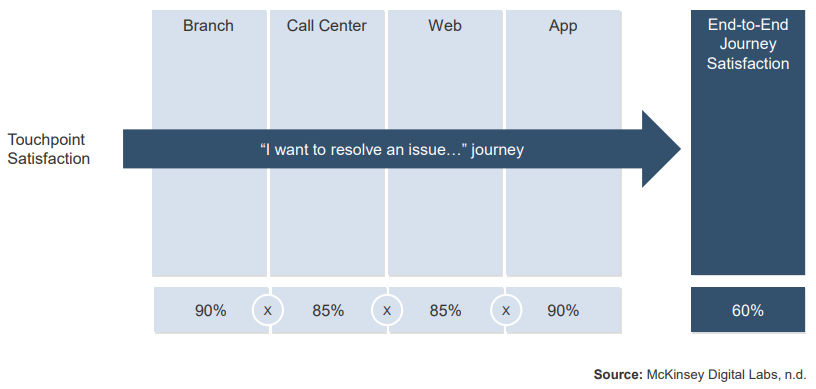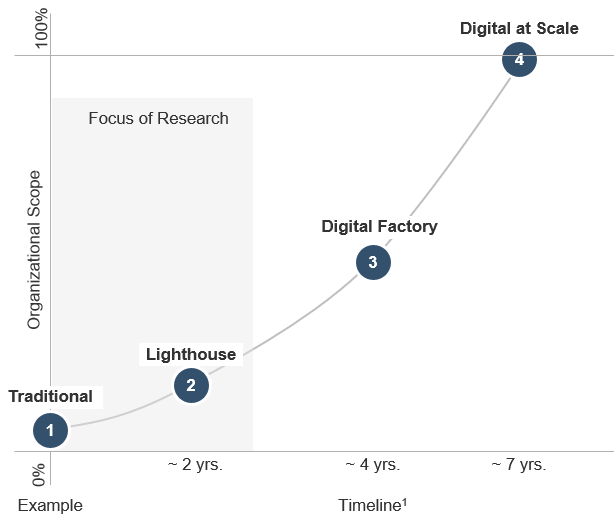Introduction
There is always talk that we must place the customer at the center of digital transformation. However, how to do it is not always clear. The answer to this situation is to focus more on the client and in an agile way. However, focusing on the customer is almost a no-brainer these days. Effective digital transformation requires fundamentally changing the way your organization operates. To use your products and services, customers interact with your organization, and not with your business units, individually. Therefore, aligning with the way customers interact will position you substantially as long as you improve the customer experience, beyond the incremental gains derived from individual contacts.
Before starting it is important to define the concept of “Customer Journey”, such as the journey, or the path that a customer travels through the different points of contact and interrelation with organizations.
In this article, we’ll help you lay the foundation for a new digital operating model by following these steps:
- Identify and prioritize critical “customer journeys” as focus projects of the organization.
- Appoint autonomous and self-aligned launch teams.
- Embrace a new agile way of working and instill in your team a culture for success.
- Actively collaborate with senior leaders in establishing the new operating model.
Organizational Context
The organization undertakes multiple independent initiatives to improve customer satisfaction with products and services; however, these initiatives may not impact or negatively impact you and only deliver incremental profits within separate business units.

Uncoordinated efforts for initiatives within organizational silos fail to address “Customer Journeys” from one end to the other, as a customer journey could include multiple points of contact with the customer and could span several days or weeks. For example, the “Resolve a problem with my payment” customer journey might require a bank customer to use an online channel and Contact Center (multiple points of contact), and could span two to three days. The organization lacks guidance to establish a new operating model around Customer Journeys.
To solve this problem, organizations must move from executing uncoordinated efforts within silos to launching digital transformation initiatives, organized around Customer Journeys and taking into account that the customer journey can have a low score in satisfaction even when the points of Individual contact works well.
IT Operating Models
Most organizations go through a maturity curve between traditional and digital IT operating models at scale. Here is a brief description of these models:

- Traditional Model: At this level of maturity, the Initiatives sponsored and implemented are organized by business lines, where the PMO manages the dependencies between different teams and the budget is fixed and is assigned annually in a conventional manner, considering that the projects are approved on the basis of the returns on investment (ROI).
- Lighthouse Model: Corresponds to a new unit, separated from the main business; which is largely managed autonomously. One or two of the most critical Customer Journeys are often worked on as focus initiatives. It takes advantage of the style used by venture capitalists (Venture Capitalist), based on the financing of Minimum Viable Products (MVP) and agile IT delivery methods. Internal digital talent integrated into the new unit is assigned. If necessary, external talent is hired; sometimes through the purchase of a startup.
- Digital Factory: Generally they have a global reach. The Digital Competence Center is the driver of the change process in the organization. They are digitized systematically and end-to-end; important Customer Journeys.
- Digital at scale: In this case, the company is built or rebuilt according to digital principles.
Proposed Roadmap
When a company is thinking of implementing a customer-centric digital operating model; Leaders in charge of digital transformation must ask three questions, to build the roadmap in the implementation of it based on these:
- Which Customer Journeys should I transform first? Identify the Customer Journeys critical to your organization, prioritize them based on their contribution of value to the organization, and select one or two of these as focus initiatives. As an answer we should have a Customer Journeys taxonomy and prioritization, with one or two CJs selected.
- What equipment is suitable to carry out the transformation? It is important to assign agile cross-functional teams to Customer Journeys, identifying the specific talent and skills required. Subsequently, it is key to create a suitable reporting structure and an incentive plan to motivate the team and identify training programs for specific roles and for the exchange of knowledge between different teams. As a result, a multidisciplinary team structure with clear roles and responsibilities should be defined, accompanied by an Advisory Committee, along with its decision-making rights and responsibilities. Additionally, in the case of the CJs that are the focus; The list of skills required for CJs should be defined, a set of reports that include the relevant KPIs and the incentives associated with the team based on these KPIs.
- What critical processes and what governance structure are required? You need an agile IT delivery model with a focus on iterative value delivery. From a financial standpoint, budgeting is venture capitalist style, where the minimum viable product is funded up front and future funding depends on the performance of the product. Proactive change management is necessary to expand the chances of digital investment success. The prioritization of the backlog is important as well as the roadmap both strategically and tactically; supported by management through KPIs and other metrics for better decision making. Incorporation of customer feedback throughout the process must be ensured.
Organizations that have redesigned critical Customer Journeys are profiting in four ways:
- Increase in customer satisfaction in relation to the main CJs.
- Increase in critical KPIs associated with CJs, for example the resolution time for a classic “I solve” CJ.
- Increased satisfaction of employees associated with the CJs.
- A faster “Go to Market” for those new features; going from annual to monthly or even biweekly releases.
Conclusions
- Improving customer satisfaction at individual touch points does not necessarily translate into an improved end-to-end customer journey experience.
- To be successful it is necessary to implement a new operating model around Customer Journeys.
- An organization with the traditional structure, processes and technology inherited; must first learn how to redesign some critical Customer Journeys as focus initiatives before scaling.


